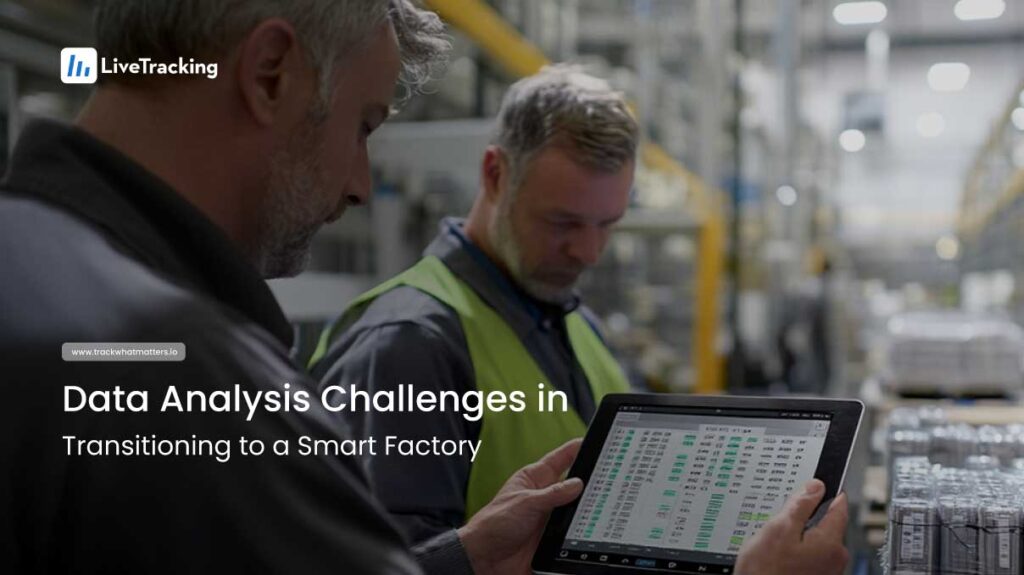Data Analysis Integration of MES with ERP and Other Systems
Manufacturing execution systems (MES) are essential to improving manufacturing efficiency, but their effectiveness depends on integration.
Smart factories represent the next evolution in manufacturing, where data-driven automation, AI, and IoT integration enhance efficiency, reduce waste, and improve overall productivity. While this transformation offers numerous benefits, companies must navigate significant challenges to fully leverage Industry 4.0 technologies.

Despite the numerous advantages of smart factory solutions, transitioning to this model does come with challenges. One major hurdle is the upfront investment required for advanced technologies and infrastructure upgrades. Organizations may face financial constraints that can impede their ability to adopt new systems. This initial capital outlay can be daunting, particularly for small to medium-sized enterprises (SMEs) that may not have the same financial resources as larger corporations. As a result, many SMEs may find themselves at a competitive disadvantage if they cannot secure the necessary funding or support to modernize their operations.
Furthermore, integrating new technologies with legacy systems can be complex. Many manufacturers operate with outdated equipment that may not easily connect with modern technologies, requiring significant re-engineering of processes. This integration challenge can lead to increased downtime during the transition period, affecting production schedules and overall efficiency. Additionally, the lack of standardized protocols across different systems can complicate the integration process, necessitating custom solutions that can further strain resources and timelines.
Additionally, there is a pressing need for workforce training as employees must adapt to new technologies and processes. Resistance to change can hinder the acceptance and successful implementation of smart factory solutions. Organizations must invest in comprehensive training programs that not only teach employees how to use new systems but also emphasize the benefits of these changes. This cultural shift towards embracing technology can be a significant barrier, especially in industries where traditional practices have been deeply ingrained over decades.
Finally, ensuring data security is critical. As smart factories become more interconnected, they also become more vulnerable to cybersecurity threats. Manufacturers must invest in robust security measures to protect valuable data from breaches. This includes implementing advanced encryption methods, regular security audits, and employee training on cybersecurity best practices. The potential for cyberattacks not only jeopardizes sensitive information but can also disrupt operations, leading to costly downtime and damage to a company’s reputation. As the landscape of manufacturing evolves, the need for a proactive approach to cybersecurity will only grow more pressing.
Moreover, navigating regulatory compliance presents another layer of complexity. As smart factories leverage data analytics and IoT devices, they must adhere to a myriad of regulations concerning data privacy and environmental standards. Staying compliant can require additional resources and expertise, which may not be readily available within the organization. This regulatory landscape is constantly evolving, and manufacturers must remain vigilant to avoid penalties and ensure their operations align with industry standards.
Several companies have successfully implemented smart factory solutions, serving as exemplars in the industry. One notable example is Siemens, which has developed its Smart Manufacturing ecosystem that integrates AI, IoT, and automation to enhance productivity and innovation. Siemens leverages real-time data analytics to monitor production processes, allowing for immediate adjustments and minimizing downtime. This proactive approach not only boosts efficiency but also fosters a culture of continuous improvement, as teams are empowered to make data-driven decisions that enhance overall performance.
An additional case study is General Electric (GE), which has employed digital twins technology in its manufacturing processes to create virtual replicas of physical assets. This innovation allows GE to perform predictive maintenance and optimize production efficiency. By simulating various operational scenarios, GE can identify potential issues before they arise, significantly reducing the risk of costly breakdowns. Furthermore, this technology facilitates better resource allocation and planning, ensuring that production schedules align with market demands while minimizing waste.
Another leader in this domain is Bosch, which has implemented connected manufacturing processes across its production facilities. By utilizing IoT devices and advanced manufacturing analytics, Bosch has achieved significant improvements in operational efficiency and product quality. The integration of machine learning algorithms into their systems enables Bosch to continuously refine its processes, adapting to changes in production needs and consumer preferences. This adaptability not only enhances Bosch’s competitive edge but also positions the company as a pioneer in sustainable manufacturing practices, as they strive to reduce their environmental footprint through smarter resource management.
These organizations showcase how embracing smart factory solutions can lead to transformative results in the manufacturing sector, driving not only efficiency but also innovation and growth. The ripple effects of these advancements extend beyond the factories themselves, influencing supply chain dynamics and customer relationships. As these companies continue to innovate, they set benchmarks for the industry, inspiring others to explore the potential of smart technologies and redefine their operational strategies in an increasingly digital world.
As technology continues to evolve, the future of smart factories appears promising. Industry experts predict that the adoption of machine learning and AI will become more prevalent, enabling even greater automation and intelligent decision-making.
Furthermore, the rise of 5G technology will facilitate faster and more reliable communication between devices, enhancing the interconnectedness of smart factories. This advancement will enable real-time monitoring and management on an unprecedented scale.
In addition, the growing emphasis on sustainability will drive the adoption of smart factory solutions that prioritize energy efficiency and waste reduction, aligning with global efforts to combat climate change.
Ultimately, as more organizations embrace smart manufacturing practices and technologies, we can expect to see a more adaptive, resilient, and efficient manufacturing ecosystem that responds rapidly to changing consumer needs and market conditions.
Moreover, the integration of Internet of Things (IoT) devices will play a crucial role in the evolution of smart factories. These connected devices will collect and analyze data from various stages of the manufacturing process, providing insights that can lead to improved operational efficiency. For instance, predictive maintenance powered by IoT sensors can significantly reduce downtime by anticipating equipment failures before they occur, thus ensuring a smoother production flow.
Additionally, the workforce in smart factories will undergo a transformation as well. With the increasing reliance on automation and AI, there will be a growing need for skilled workers who can manage and interpret complex data systems. This shift will necessitate new training programs and educational initiatives aimed at equipping employees with the skills required to thrive in a technology-driven environment. As a result, the future workforce will not only be adept at operating machinery but also proficient in data analysis and digital literacy, fostering a culture of innovation and continuous improvement within the manufacturing sector.
Ready to revolutionize your manufacturing operations and achieve an increase in equipment efficiency? LiveTracking is here to guide you into the future of Industry 4.0 with our cutting-edge solutions. Take the first step towards optimizing your production process and simplifying the tracking of critical statistics with a free full demo. Schedule a quick Demo call within the next two weeks, and let’s explore the opportunities that LiveTracking can unlock for your smart factory.

1. What is a smart factory?
A smart factory is a manufacturing facility that uses automation, AI, and IoT technologies to optimize production, increase efficiency, and reduce costs.
2. How does data analysis improve manufacturing efficiency?
Data analysis helps manufacturers monitor production, predict equipment failures, and optimize processes in real-time, leading to cost savings and reduced downtime.
3. What are the biggest challenges in implementing a smart factory?
Common challenges include integration with legacy systems, employee training, cybersecurity risks, and regulatory compliance.
4. What industries benefit the most from smart factory solutions?
Industries such as food and beverage industries, automotive, electronics, pharmaceuticals, and consumer goods benefit significantly from smart manufacturing technologies.
5. How can LiveTracking help optimize my smart factory?
LiveTracking provides real-time data analysis, predictive maintenance tools, and automated tracking solutions to enhance operational efficiency and security in your factory.
Share
Table of Content
Stay Up-to-Date
Get LiveTracking news in your inbox.
Error: Contact form not found.
By submitting this form I have read and acknowledged the Privacy Policy.
The latest industry news, interviews, technologies, and resources.
Manufacturing execution systems (MES) are essential to improving manufacturing efficiency, but their effectiveness depends on integration.
Unlock the full potential of your manufacturing operations with our comprehensive guide on MES implementation strategies.